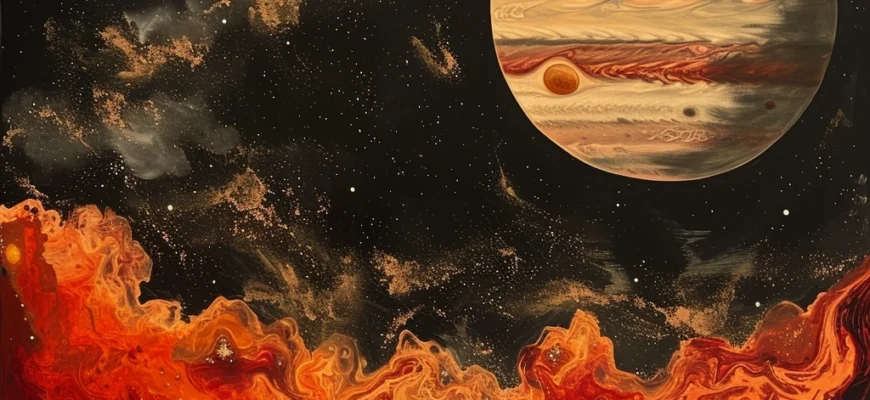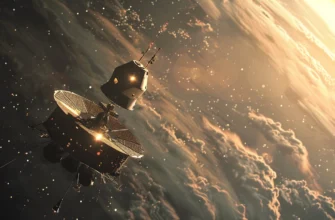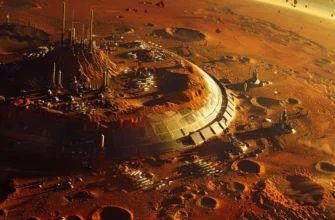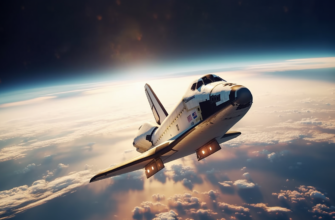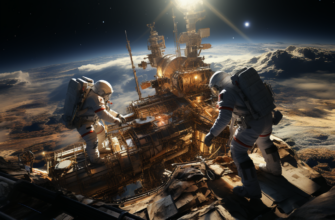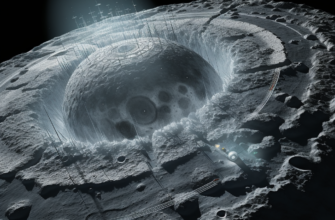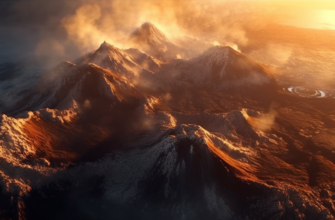Jupiter has fascinated humankind since ancient times. As the largest planet in the solar system, the gas giant planet has captivated astronomers and space enthusiasts who seek to understand its mysteries. Two iconic NASA missions, Galileo and Juno, have dramatically increased our knowledge about the Jovian world over the past few decades.
Overview
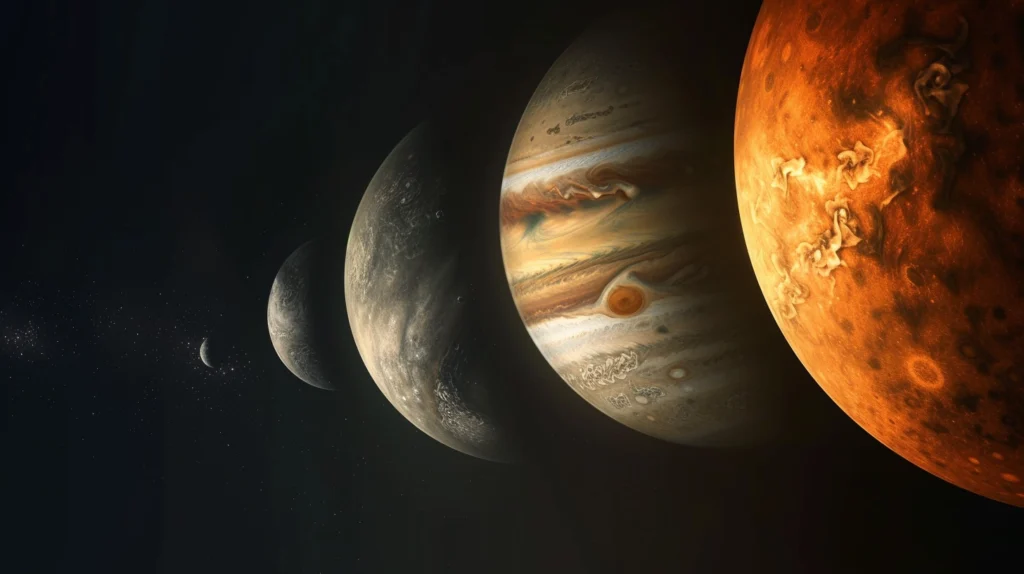
The Galileo and Juno NASA misson’s to Jupiter have revealed groundbreaking discoveries about the planet’s atmosphere, magnetosphere, moons, and interior structure.
- The Galileo spacecraft, launched in 1989, was the first to conduct long-term observations of Jupiter and its moons. It discovered evidence of subsurface oceans on Europa, Ganymede, and Callisto and analyzed the kaleidoscopic clouds of Jupiter in detail.
- Juno, launched in 2011, is revolutionizing our understanding of Jupiter’s origin, interior structure, atmosphere, magnetosphere, and poles. Its close polar orbits are mapping Jupiter’s gravitational and magnetic fields with unprecedented accuracy.
By combining data from these milestone missions along with Earth-based observations and theoretical modeling, scientists are gaining remarkable insights into the complex forces that shaped Jupiter, the potential habitability of its moons, and the influences it has on the rest of the solar system.
Galileo: First Orbiter of Jupiter
The Galileo orbiter and its attached probe plunged into Jupiter’s atmosphere in 1995, embarking on a quest to study the giant planet’s meteorology, magnetic fields, satellite systems, and more over the course of eight years.
Mission Overview
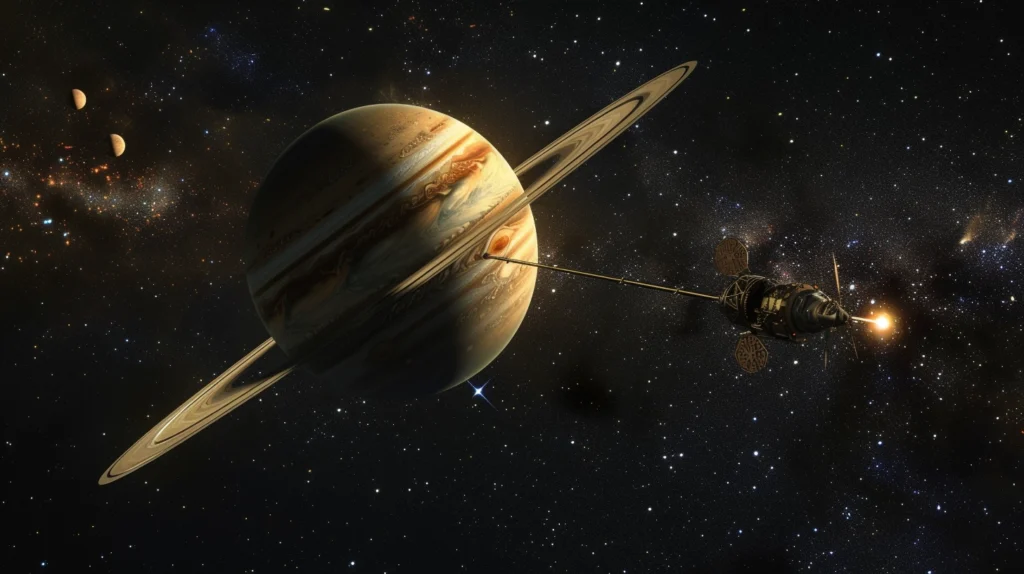
The Galileo spacecraft was launched aboard the Space Shuttle Atlantis in 1989, headed towards a Venus-Earth-Earth Gravity Assist trajectory that would slingshot it towards Jupiter. It released an atmospheric probe that descended via parachute into Jupiter on December 7, 1995, directly measuring its composition, winds, and temperature for over an hour before being crushed by the immense pressures.
The Galileo orbiter continued circling Jupiter for eight years, completing 34 flybys of the gas giant’s diverse Galilean moons and providing remote sensing observations. It found evidence that Europa, Ganymede, and Callisto may have subsurface oceans beneath their icy crusts – potential habitats for extraterrestrial life. Galileo also analyzed Jupiter’s ring system, magnetosphere, radiation belts, weather patterns, and interior structure before plunging into the planet on September 21, 2003 to eliminate any risk of contaminating the potentially habitable moons.
Over its lifetime, the Galileo spacecraft took nearly 14,000 pictures of Jupiter, its rings, and moons. The detailed information it returned on Jupiter’s magnetosphere, radiation environment, atmosphere, and satellite interactions has proven invaluable for understanding planetary systems.
Key Discoveries
Some of the major discoveries and contributions of the Galileo mission include:
- Provided compelling evidence of subsurface oceans on Jupiter’s icy moons Europa, Ganymede, and Callisto
- Revealed that Jupiter’s rings are made of small dust grains unlike Saturn’s icy ringlets
- Identified volcanic resurfacing and craters on Io’s dynamic surface
- Confirmed the presence of a thin ring system and small inner moons orbiting Jupiter
- Analyzed the kaleidoscopic cloud patterns, wind speeds, lightning strikes, and tumultuous storms of Jupiter’s turbulent atmosphere
- Mapped Jupiter’s intense and rapidly fluctuating magnetic field
- Returned vital data on the elemental composition, winds, pressures, and temperatures within Jupiter’s atmosphere from the descending probe
- Revealed asymmetries between particles and fields on Jupiter’s magnetotail
Building on discoveries by the Voyager probes, Galileo’s successors have continued to analyze and explain the complex interactions governing the Jovian system. The enduring legacy of remote sensing data from Galileo ensures it remains one of NASA’s most scientifically rich planetary science missions.
Galileo Mission Facts
| Launch Date | October 18, 1989 |
| Arrival at Jupiter | December 7, 1995 |
| End of Mission | September 21, 2003 |
| Total Flybys | Jupiter (34), other moons (8) |
| Notable Instruments | Solid State Imager, Near-Infrared Mapping Spectrometer, Photopolarimeter/Radiometer, Magnetometer, Dust Detector |
Juno: Peering Below Jupiter’s Clouds
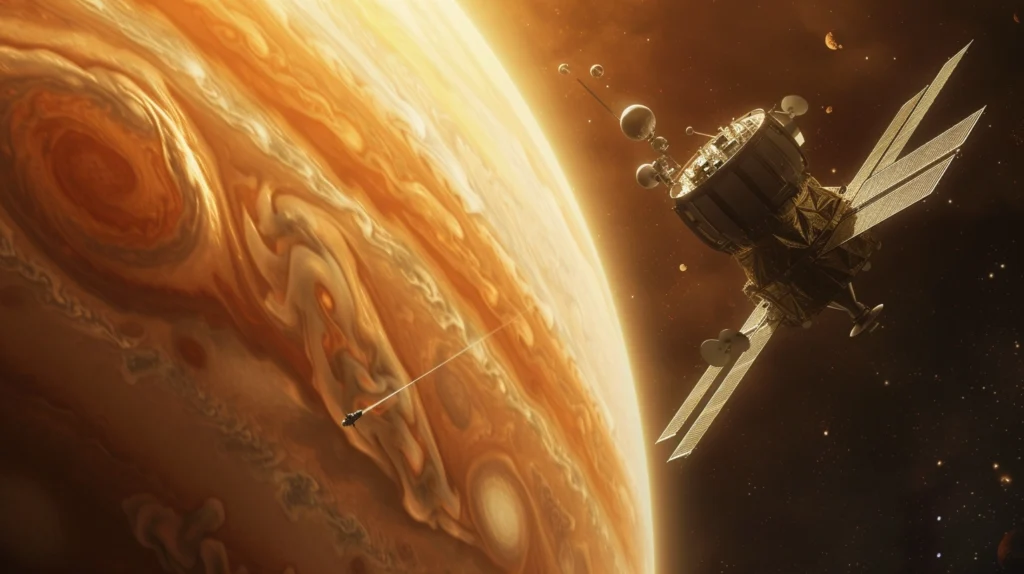
The Juno spacecraft entered a polar orbit around Jupiter on July 4, 2016 to map gravitational and magnetic fields, atmospheric composition, deep interior structure, and polar auroras.
Mission Overview
The Juno spacecraft launched August 5, 2011, embarking on a five-year interplanetary trajectory utilizing a gravity assist from Earth to propel itself towards Jupiter. After successfully entering orbit on July 4, 2016, Juno initiated a series of 37 close flybys skimming 5,000 km above Jupiter’s cloud tops in highly elliptical polar orbits.
Juno’s scientific payload of nine instruments collects remote sensing observations above the clouds while simultaneously measuring gravitational and magnetic signals passing through Jupiter. These tight polar orbits minimize harmful exposure from Jupiter’s intense radiation belts, allowing detailed analysis of the gas giant’s auroras and cloud structures for the first time.
The Juno mission plans to continue orbiting Jupiter through July 2021, gathering radio science, magnetic, plasma wave, and particle data to decode Jupiter’s origin story and internal structure. Already, Juno’s contributions have substantially advanced planetary science – but there are still more revelations to unfold about the king of planets.
Key Discoveries
Juno’s groundbreaking observations are revolutionizing our understanding of Jupiter, including these remarkable findings:
Atmosphere
- Jupiter’s atmospheric stripes and zones extend much deeper than expected
- Water makes up 0.25% of molecules in atmosphere – 10 times more than sun’s composition
- Detected complex organic molecules like ammonia and hydrogen sulfide
- Mapped weather patterns, wind speeds, and cylcone movements in 3D
Interior
- Jupiter interior structure distinct with no clearly defined core
- Detected unusual magnetic circuits linking equator to poles
- Inconsistencies in gravity and magnetic readings indicate complex dynamo
- Lightning 8 times stronger than Earth’s strikes Jupiter’s poles
Magnetosphere
- Huge magnetodisk sends heavy ionized particles transporting millions of watts
- Visualized mechanisms for bright auroral emissions at poles
- Analyzed interactions with volcanic moon Io’s plasma torus
Moons
- Imaged lo’s volcanic surface and plasma interactions
- Analyzed Ganymede’s magnetic field and Callisto’s crustal surface
These remarkable revelations from Juno reinforce planetary scientists’ view that each Jovian world is a complex, interconnected system reflecting dynamic processes within Jupiter as a whole. As the mission continues, we anxiously await new images and sensor readings further cracking open Jupiter’s mysteries.
Juno Mission Facts
| Launch Date | August 5, 2011 |
| Arrival at Jupiter | July 4, 2016 |
| Planned End of Mission | July 2021 |
| Total Perijoves | 37 close polar flybys planned |
| Notable Instruments | Gravity Science, Magnetometer, Microwave Radiometer, Jovian Infrared Auroral Mapper, Stellar Reference Unit |
Unlocking Jupiter’s Secrets
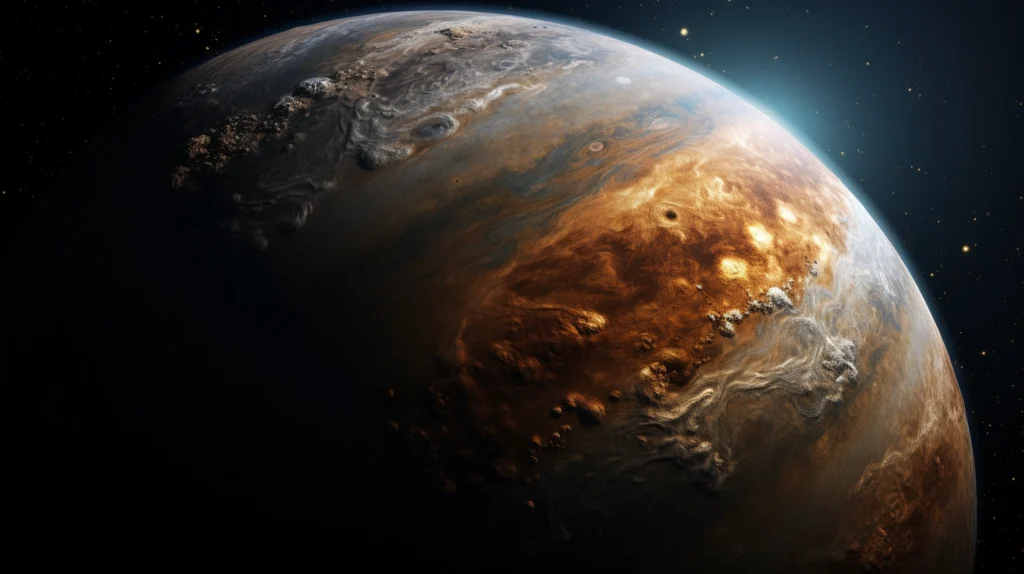
The hardy Galileo and Juno spacecraft have withstood intense radiation, extreme cold, asteroid impacts, and complex automated maneuvers to transform humankind’s understanding of Jupiter. Equipped with advanced suites of cameras, spectrometers, particle detectors, and radio science experiments, these orbiters have revealed groundbreaking insights about Jupiter’s swirling interior, stormy atmosphere, powerful auroras, and potentially habitable moons.
Atmosphere and Weather
Combining data from Galileo, Juno, and Earth-based observatories, planetary scientists have characterized turbulent weather patterns churning within Jupiter’s massive atmosphere:
- Zones and Belts: Bright ammonia-ice clouds and atmospheric zones encircle Jupiter, disrupted by darker belts of clouds
- Great Red Spot: Jupiter’s iconic anticyclonic storm twice as wide as Earth rotates counterclockwise, trapped along the boundary of zones
- Storms and Vortices: Turbulent cyclones, anticyclones, and storm systems constantly form and morph as they trace jet streams flowing east to west
- Lightning: Juno detected lightning strikes 8 times more powerful than Earth’s concentrated near Jupiter’s poles
- Winds: Jet streams reaching 384 mph make Jupiter the fastest spinning planet in the solar system
- Clouds: Colorful clouds at different altitudes contain ammonia ice, acetylene, ammonium hydrosulfide, and unknown chromophores
Jupiter’s atmosphere exhibits more complexity and dynamism than planetary scientists imagined, with convection currents extending much deeper and further than originally expected. Both limb darkening measurements and gravity readings suggest Jupiter lacks a hard surface, transitioning smoothly between gaseous outer layers and liquid metallic hydrogen approaching the core.
Interior Structure
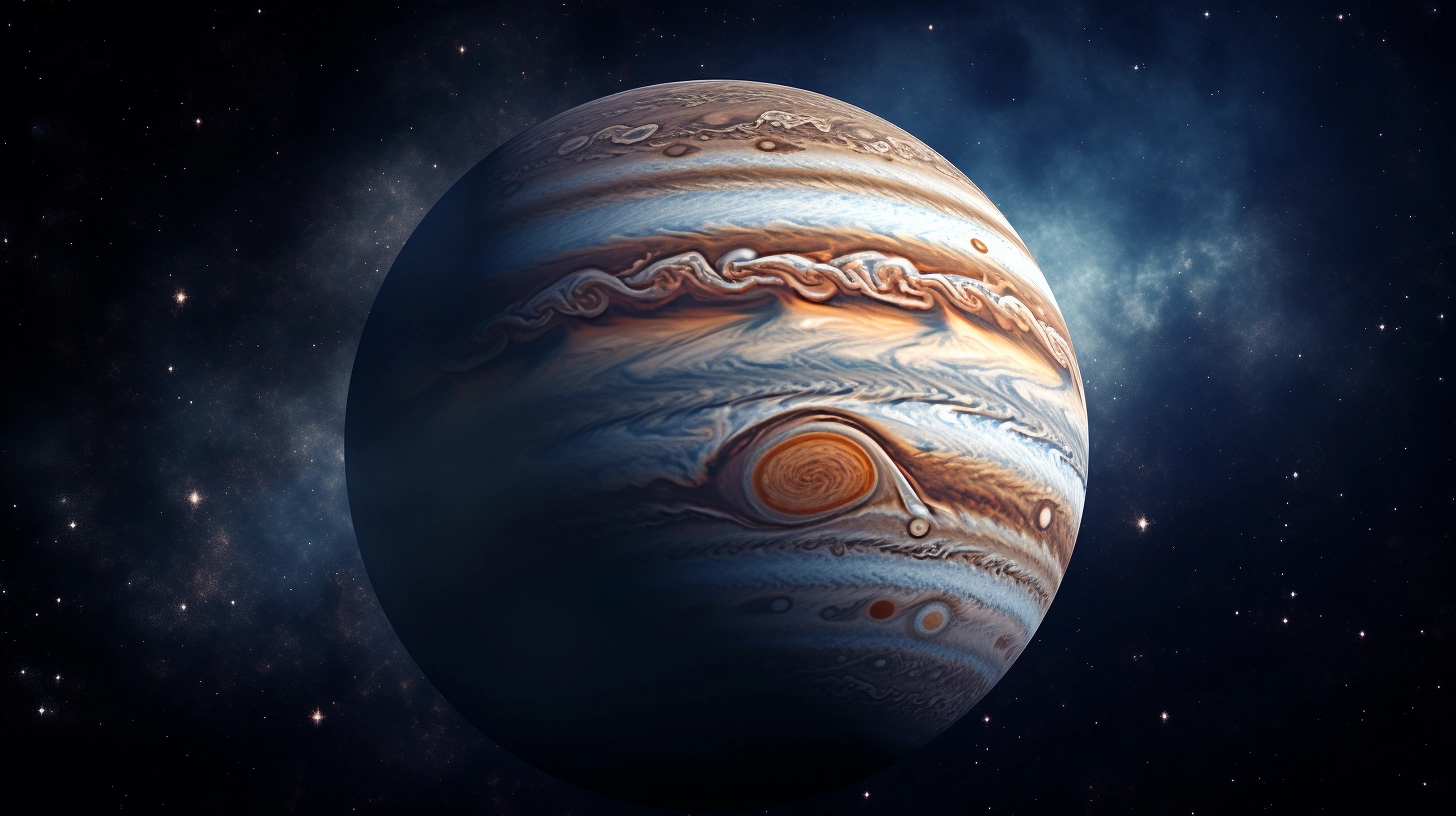
Though many details remain hidden beneath the thick cloud layers, NASA’s missions have substantially improved knowledge about Jupiter’s interior structure:
- No Solid Core: Gravity and magnetic readings show Jupiter transitioning slowly from an outer envelope to a mantle of liquid metallic hydrogen
- Differential Rotation: Jupiter’s upper atmosphere rotates faster than interior layers
- Complex Dynamo: Non-aligning magnetic and gravity data indicate unusual electromagnetic field generation closer to surface
- Heavy Elements: Jupiter contains 2-10 times more heavier elements than the Sun, providing clues to the planet’s origin
Further analysis of Jupiter’s uneven gravity and magnetism through Juno’s remaining polar orbits may better explain mechanisms separating layers and materials within this gigantic, exotic world.
Magnetosphere
As the most powerful aurora-producing planet, Jupiter’s mighty magnetic field traps and accelerates charged particles into brilliant displays at the poles:
- Auroras: Juno’s UV and infrared sensors create amazing time-lapse visualizations of the shimmering northern and southern lights
- Radiation Belts: Intense radiation around Jupiter regularly damages spacecraft electronics, requiring specialized shielding
- Magnetodisk: Jupiter’s centrifugal forces stretch and distort the magnetic field into a pancake-shaped magnetodisk
- Io Plasma Torus: Volcanic sulfur ions from Jupiter’s moon Io travel along magnetic field lines creating a “flux tube” of plasma centred around Io’s orbit
Unraveling connections between auroras, plasma fluxes, radio emissions, and the magnetic field illustrates the complex space environment and influences surrounding Jupiter.
Galilean Moons
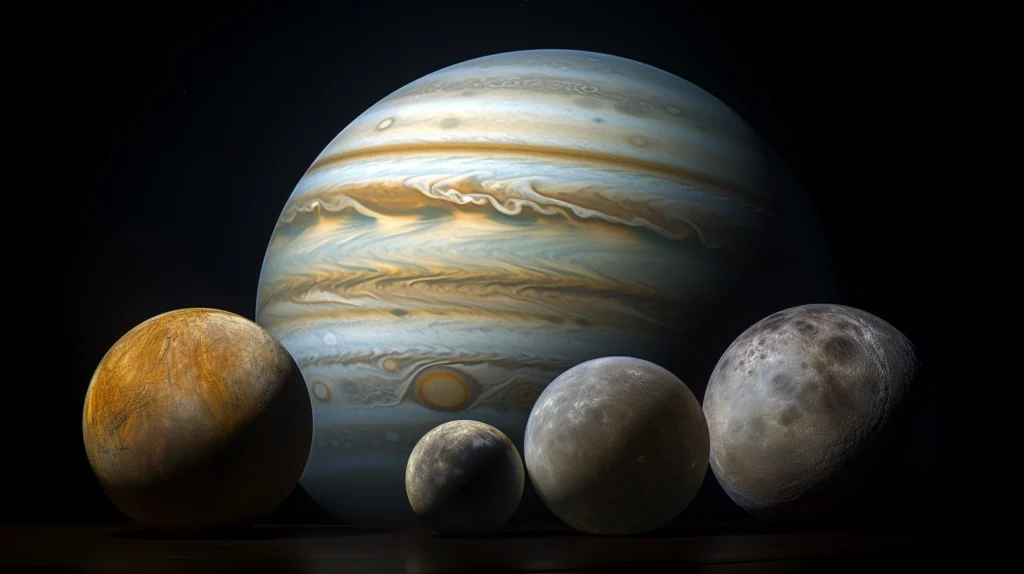
Jupiter’s diverse Galilean moons remain at the forefront of astrobiology research:
- Europa: Tidal heating maintains subsurface ocean under an icy crust, regarded as the most promising habitat for extraterrestrial life
- Ganymede: Largest moon in the solar system harbors an underground saltwater ocean sandwiched between ice layers
- Callisto: Heavily cratered surface provides clues to Jupiter’s system early formation history
- Io: Volcanically-resurfaced terrain rich with lava lakes, lava flows, mountains, and active plumes
Further observations by the upcoming Europa Clipper and JUICE (JUpiter ICy moons Explorer) missions will analyze the habitability of the icy Galilean moons in greater detail.
The Future
The Galileo and Juno missions captured widespread public imagination while fundamentally transforming scientific knowledge about Jupiter’s formation, weather, interior, extreme magnetism and enigmatic moons. Additional insights collected before Juno’s retirement in 2021 will supplement Earth-based observation campaigns like Hubble’s Outer Planet Atmospheres Legacy (OPAL) program.
Excitement continues building towards the Europa Clipper mission, launching in 2024 on a long trajectory towards Jupiter’s icy moon, along with ESA’s JUICE orbiter investigating Ganymede and Callisto later this decade. Nuclear-powered spacecraft capable of enduring Jupiter’s harsh radiation open up broader possibilities to deploy small landers or drone probes onto the potentially habitable moons for subsurface ocean exploration in the more distant future.
As toujours, Jupiter continues intriguing generations of astronomers seeking to decode the origins and sublime complexity of our solar system’s largest world.

